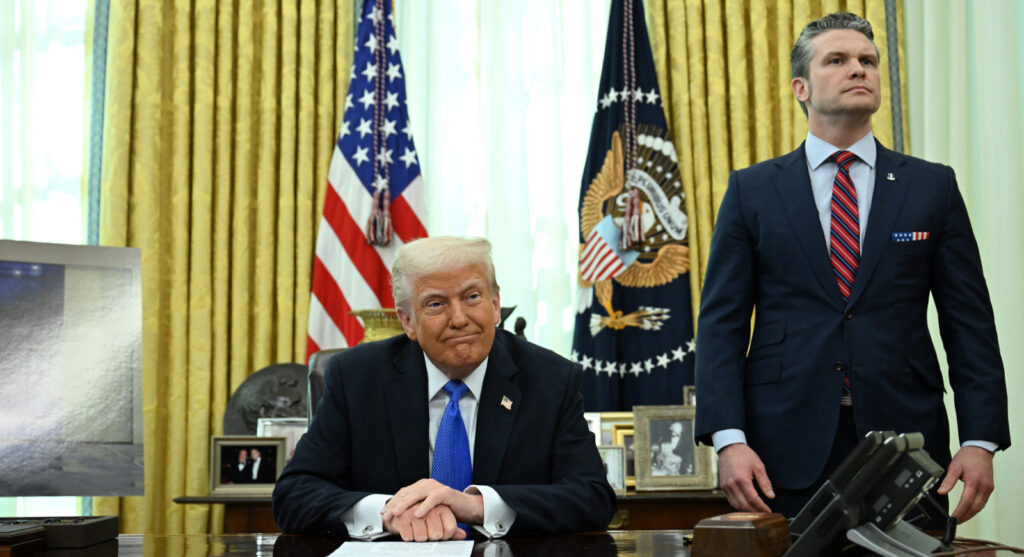Consumer prices declined by 0.1% in March compared to the previous month, a reversal from the 0.2% increase recorded in February, according to Bureau of Labor Statistics data released Thursday.
This marks the first instance of a monthly price drop since May 2020, CNN reported, and a potential sign of things to come under the leadership of President Donald Trump.
Additionally, the bureau noted that its all-items index rose by 2.4% over the 12 months ending in March, a decrease from the 2.8% increase observed over the 12 months ending in February.
“Wall Street had been looking for headline inflation of 2.6% and core at 3%, according to the Dow Jones consensus,” CNBC reported.
Falling energy prices helped keep inflation in check in March, with gasoline prices dropping by 6.3%—a decline that contributed to a 2.4% decrease in the broader energy index. Meanwhile, food prices increased by 0.4% over the month, with egg prices rising an additional 5.9% and up 60.4% compared to the same period last year.
In addition, shelter costs, typically one of the most resistant components of inflation, only climbed by 0.2% in March and were 4% higher over the past year—the smallest annual gain since November 2021. Used vehicle prices fell by 0.7%, while new vehicle prices saw a modest increase of just 0.1%, all ahead of impending tariffs expected to have a significant impact on the auto industry.
Airline fares dropped by 5.3% in March, while motor vehicle insurance decreased by 0.8% and prescription drug prices fell by 2%. Following the release, stock market futures indicated a much lower opening on Wall Street, and Treasury yields slipped into negative territory, CNBC added.
The report comes just one day after Trump made a dramatic reversal in his tariff strategy. He delayed some of the more aggressive duties imposed on dozens of nations while keeping a 10% blanket levy on all imports, and he set a 90-day period during which the White House will negotiate adjustments to the higher tariffs.
Despite campaigning on a promise to bring down inflation, progress has been slow at the start of 2025. Trump has nonetheless called on the Federal Reserve to lower interest rates.
However, central bank officials have expressed caution amid significant policy uncertainty, and market pricing now suggests that the Fed will likely wait until June before considering rate cuts.
Most economists had expected the tariffs to trigger a significant bump in inflation, although that outcome is less clear now that Trump has opened a negotiation window for revising the tariffs.
“Today’s softer-than-expected CPI release feels backward-looking, given the large changes to trade policy seen in recent days,” said Kay Haigh, global co-head of fixed income and liquidity solutions at Goldman Sachs Asset Management, according to the outlet. “Going forward, the Fed is likely to face a difficult trade-off as tariff-driven price increases start to feed through to the inflation data and activity remains soft.”
CNBC added: “Futures market pricing after the CPI report indicated little change in market expectations for interest rates, with traders pricing in three or four cuts by the end of the year.”
Inflation has been slowing or decreasing since Trump took office.
The U.S. Bureau of Economic Analysis released its Personal Consumption Expenditure (PCE) Index in late February, a key measure of inflation, and it showed just a fractional 0.3% increase last month as Trump began to tackle the economy.
Since inflation typically rises over time, economists focus not on whether it increased, but on the pace of the increase. The latest figures aligned with expert expectations, according to The Center Square.
The index increased by 2.5% compared to the same time last year, or 2.6% when excluding food and energy costs. While economists had anticipated a steeper decline in inflation by now, the current figures remain significantly lower than the rapid inflation rates experienced during the Biden administration.





